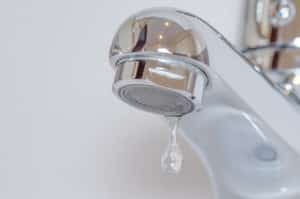 Whether you use a cleaning service to clean for you or have your own cleaning staff, many areas often go neglected, especially in facilities that aren’t required to adhere to strict agency guidelines. Not only does it make your environment safer against potential germs and viruses, it keeps your facility more presentable. Many of the cleaning tasks are quick and easy. You can even get employees involved to accomplish some of these simple tasks during down time.
Whether you use a cleaning service to clean for you or have your own cleaning staff, many areas often go neglected, especially in facilities that aren’t required to adhere to strict agency guidelines. Not only does it make your environment safer against potential germs and viruses, it keeps your facility more presentable. Many of the cleaning tasks are quick and easy. You can even get employees involved to accomplish some of these simple tasks during down time.
Walls
Walls often get scuffed, spilled on and dirty from fingerprints and other things. There are products available to easily remove those stains and scuff marks. Remove those blemishes from walls on a routine basis. The facility will look cleaner and well maintained for guests and customers. For hard-to-remove blemishes on wall, even vandalism, Worldwide Janitor’s X-it-OUT Mark Remover can quickly remove almost any mark on walls. Simply spray the area with the X-it-OUT, allow it to dwell for a few minutes, then wipe the mark away with a clean rag, soap and water. Repainting can be costly – by cleaning blemishes on walls on a routine basis, you won’t have to paint for years to come.
Drains
Drains can be the cause of odors not only in restaurants and other facilities that make and dispose of food, but also in offices and other facilities. In many cases, those smells are noticeable, but are often hard to figure out where they’re coming from. Routinely maintaining the drains will assist in eliminating odors. Products such as Superior Enzo-Bac can help break down a variety of odor-causing smells by digesting and liquefying them to flush the smells out of the drain pipes. It’s also safe for septic and holding tanks, grease traps and portable toilets used at construction sites and outdoor events that require restrooms. It’s also safe for carpets to removes odors, such as pet odors.
Water Fountains and Coolers
Water fountains and coolers are often a breeding ground for bacteria if they’re not properly maintained. They can spread germs and cause illnesses. For water fountains, use a disinfectant. Spray the water fountain down thoroughly and allow the disinfectant to dwell for a minute or two. Wipe the water fountain thoroughly using a clean rag with warm water to remove the disinfectant.
Water coolers require a little more attention. Remove the screen and tray that catches the water that drips. Take it apart and spray it with a disinfectant. Spray the base of the machine with disinfectant, including the spout that releases the water. Use a clean rag with water to remove the disinfectant. Take cup and fill it with hot water. Submerge the spout or water dispenser with in the cup filled with hot water to remove the disinfectant. Repeat the process to ensure the disinfectant is washed away. Rinse and reassemble the screen and tray. Put it back in the machine.
Faucet Screens
Faucet screens are located at the end of the faucet where the water flows out. It produces a steady stream of water when the faucet is turned on. Some also have an additional screen inside to catch deposits such as lime scale produced by hard water. Because it protects the water supply when the faucet is turned on, it can become clogged with small pieces of deposits.
Cleaning the faucet screens can be done fairly quickly, and doesn’t always require disassembling them. Fill a small cup with a mildew and lime scale remover, such as Worldwide Janitor’s Attack Mildew & Stain Remover. Submerge the faucet head into the cup for about 15 to 30 seconds. Remove the cup and allow the cleaner to dwell on the faucet head for about 15 minutes to attack the mildew and hard water stains. Turn on the faucet to flush out the cleaner and dirty deposits. If the build up is bad in the faucet screens, they can be removed fairly easily and soak in a bowl of the cleaner until the build up is removed. Rinse the faucet screens thoroughly in warm or hot water, then put them back on the faucets.
Coffee Makers
Like faucet screens, coffee makers and its accessories can accumulate hard water build up. A coffee maker’s entire system can be cleaned to remove the hard water build up. Remove any leftover grounds from the coffee maker. Pour white vinegar into the water reservoir. Use enough as if you’re making a full pot of coffee. Turn on the coffee maker and allow the white vinegar to perk through the system as if you’re making a pot of coffee. After the white vinegar is done perking and the coffee pot is full, remove the reservoir for the coffee grounds and empty the coffee pot. Rinse them thoroughly in hot water. Refill the coffee pot with water and perk the water to remove any remaining white vinegar and deposits. Perk clean water several times through the coffee maker if necessary. The white vinegar will have a pungent smell, but it dissipate over time.
Not only will cleaning those items and areas assist in avoiding unpleasant odors, it’ll help kill any potential germs and bacteria. After the coffee pot is cleaned, the coffee will even taste better. Removing mineral and hard water deposits will also allow items to function properly.





